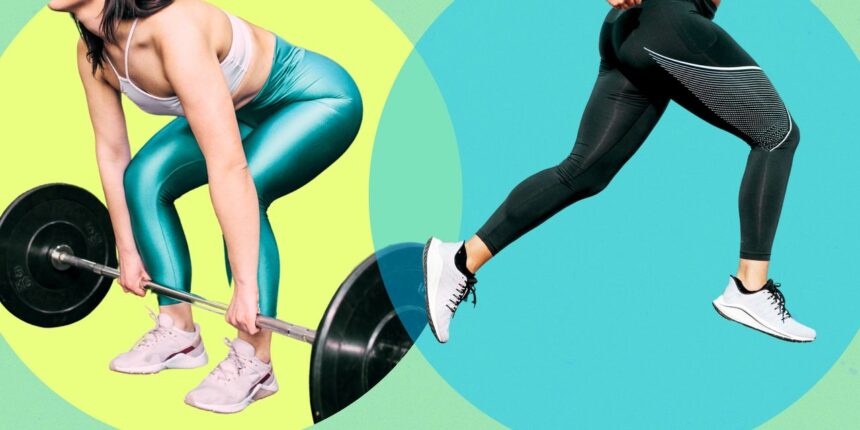Maybe you’re a runner who strength trains to stay injury-free, a lifter who dabbles in sprinting for power, or someone who’s aiming to incorporate both cardio and resistance into your general routine—a.k.a. the original “hybrid athlete.”
Regardless of your goals, if your routine involves both cardio and strength, you might wonder: Do I really need different sneakers for each activity, or can I wear the same shoes for running and lifting?
Apologies to your wallet, but generally speaking, it’s a good idea to have separate shoes for these inherently pretty different activities, John Mercer, PhD, professor in the department of kinesiology and nutrition sciences at the University of Nevada, Las Vegas, tells SELF. “If we’re doing some type of work, we’ve got to know: Do we need a hammer? Do we need a screwdriver? What’s the tool that we need?” says Mercer, who researches the biomechanics and physiology of endurance sports. “Picking the right shoe is about picking the right tool.”
But some of the specifics depend on how long and intense your workouts are, as well as what type of weight training you’re doing. For instance, if you’re powerlifting or doing other complex movements with free weights, your shoes matter more than if you’re using weight machines, he says.
Here’s more about when—and why—to consider shoes that are specific to each segment or session, as well as the situations and sneaks that may be better geared to double duty.
Shoes made for a specific activity have features designed to reduce injuries and improve performance.
A quick visit to your local running store can easily leave you feeling overwhelmed by all the options and lingo. But while there are many different categories and models, running shoes are pretty much all generally designed for the same overall goal: to propel your foot forward, Leo Arguelles, PT, DPT, a clinical assistant professor at the University of Illinois at Chicago and spokesperson for the American Physical Therapy Association, tells SELF.
Many models these days have significant cushioning—a thick but light and bouncy layer of foam in the midsole. This foam, which creates that platform appearance some brands like Hokas are known for, absorbs the shock from each footstrike and also offers a little springiness to power your next step forward, a quality called energy return, Anh Bui, DPT, CSCS. a physical therapist, running coach, and strength coach at Run Resiliently in Oakland, California, tells SELF.
All that can improve your performance and may even mitigate injury risk, perhaps by spreading out the force of the impact, Robert Conenello, DPM, a sports podiatrist and founder of Orangetown Podiatry in Orangeburg, New York, tells SELF.
In addition, running-shoe bottoms are often shaped like rockers, which guide your foot through each stride. You can see this even before you put them on: If you push on the toe when they’re sitting on the ground, they’ll give a nice little rock back and forth, Dr. Arguelles says.
Read the full article here



